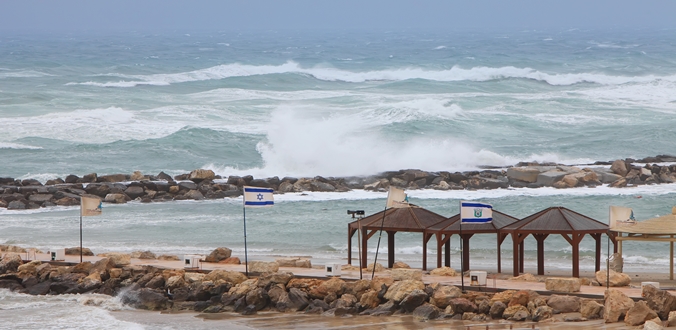With about 300 sunny days every year, Tel Aviv is a warm weather getaway year-round for Israeli and international travelers alike. However, despite the consistently warm weather, each season offers a different experience, so you should plan your trip accordingly. The two main culprits to watch out for are the temperature and the humidity levels, which greatly affect comfort levels. Rain can also be an issue, but it is hard to plan for.
Summer in Tel Aviv (June-September) is truly a special experience. The sun is always shining, the beaches and cafes are full of life and there are special concerts and events almost daily. However, the city’s seaside location comes at a price, as temperatures reach into the 90’s F (30’s C) and humidity levels hover around 85%, reaching as high as 99%, during the daytime.
The weather in Tel Aviv truly starts to heat up in May, and it tends to stay that way until the end of September, when the rainy season begins and some beaches close.
While summer may be the best time for the beaches, mild temperatures and relatively dry weather make the rest of the year a great time to do some sightseeing in comfort as temperatures cool down a bit, but the sun continues to shine.
October and the Jewish holiday of Sukkot typically mark the beginning of autumn, but it is sometimes hard to tell, as temperatures remain in the 80’s F. However, you’ll definitely start to notice the difference near the end of the month and throughout November and December, when temperatures gradually drop into the mid-60’s F and the humidity drops below 80%, making way or the winter months and the rainy season.
Temperatures remain in the mid-60’s in January and February, but the humidity skyrockets to above 90% on average. The weather is still very comfortable, but the chance of rain is higher. Travelers from wetter parts of
the world may be underwhelmed by Israel’s rainy season, but storms off the Mediterranean can be fierce and unpredictable. When it rains, the entire country tends to slow down dramatically, especially the roads, which can make getting from place to place a struggle.
March marks the beginning of spring, as relatively high chances for rain persist, but the temperatures begin to rise through the 60’s and 70’s through the end of April. May is still considered spring, but it is more of a formality, as by that time the temperatures are already getting into the mid-80’s, the rain has stopped and the beaches are open for business.
Short sleeves are typically fine all year during the day, but nighttime can be a different story in the winter months. Low temperatures gradually drop through the 50’s F in December, and level off in the high 40’s F in January and February, before beginning to climb again in March, reaching the mid 60’s by the end of April.
To find out the weather in Israel, including Tel Aviv, click here


 English
English


















